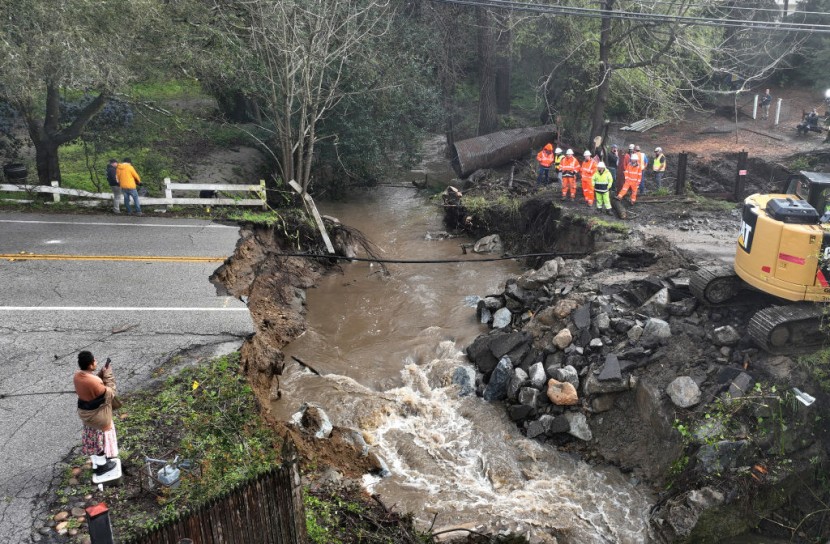
At least two people have died due to the continuous storm inundating California, and officials have issued evacuation orders for almost 10,000 homes.
The Weather Prediction Center has issued a Level 4 of 4 warning for excessive rainfall in the area due to intense flooding in numerous coastal counties caused by powerful storms dumping heavy rain throughout the state's central and northern regions.
California Level 4 of 4 Warning
Meanwhile, the State of Emergency designation sought by Governor Gavin Newsom on Thursday night has been authorized by President Joe Biden, paving the path for financial assistance for storm response and recovery, according to Nancy Ward, director of the California Office of Emergency Services.
The National Weather Service has issued flood warnings for around 25 million people, and according to PowerOutage.us, more than 25,000 are without power. Per CNN, the weather will continue to wreak havoc on the region into the weekend, as inhabitants of many mountain villages in California remain stranded by snow from back-to-back storms.
In the next six to eight hours, flash flooding will be of special concern from the central coast of California to the Sierra Nevada foothills, according to David Lawrence of the National Weather Service.
Over 4,000 staff workers working 12-hour shifts are removing dead trees and cleaning drainage culverts to prevent floods, according to Deputy Director John McKeever of the California Department of Transportation.
From Santa Cruz to San Luis Obispo, reports of big trees down by powerful winds and roads rendered inaccessible by water, boulders, and debris spanned. A crucial route in Soquel washed away, stranding people of foothill settlements.
Footage shot at Kernville, along the Kern River, and Springville, on the Tule River, depicted the rivers spilling over their banks and engulfing nearby trees and villages. As per The Washington Post, several atmospheric rivers have swept across the parched Golden State during the previous three months, significantly alleviating but not ending a severe drought.
California Experiences Excessive Rain
Following years of rationing water supply and improving water usage efficiency, the state is now confronted with issues created by excessive precipitation and the difficulty of collecting a significant portion of it for future dry periods.
Despite it being anticipated that rainfall rates would reduce by Friday evening, ongoing melting might mean that "flooding consequences could exacerbate before recovery can occur." Forecast precipitation might exceed 10 inches in 24 hours in the hardest-hit areas.
It was feared that certain reservoirs, particularly Lake Oroville, the second-largest reservoir in California, might be overwhelmed by incoming water. It retains water for the dry season and protects settlements downstream on the Feather River from flooding.
The main spillway of the Oroville Dam was opened for the first time since 2019 in preparation for a major water entry into the lake. The water has risen 180 feet since December 1 and is presently 60 feet below its maximum elevation.
The US Bureau of Reclamation's deputy operations manager, Levi Johnson, stated that the vast quantities of snowfall in the Sierra Nevada accumulating on Friday would likely present "major issues this year in controlling the large inflows" to reservoirs.
According to forecasters, the combination of rain and substantial snowmelt could trigger life-threatening floods, mudslides, and avalanches. According to USA Today, rainfall totals might range between 2 and 4 inches in San Francisco.
The central coast city of Santa Barbara might receive 1 to 2 inches. Los Angeles might receive up to an inch of precipitation. From Redding to Santa Barbara, the possibility of urban floods exists.
According to a press release from the San Bernardino County Sheriff's Department, officials in California were investigating 13 deaths, with eight of them likely linked to the severe winter weather that hit the state in late February and early March.
The person was engaged in an automobile collision during the storm and subsequently died at a hospital, according to the sheriff's department. As of Friday, eight fatalities remained under investigation, according to officials.
Related Article : Watch Tornadoes, Severe Storm Hit Texas, Louisiana
@YouTube








